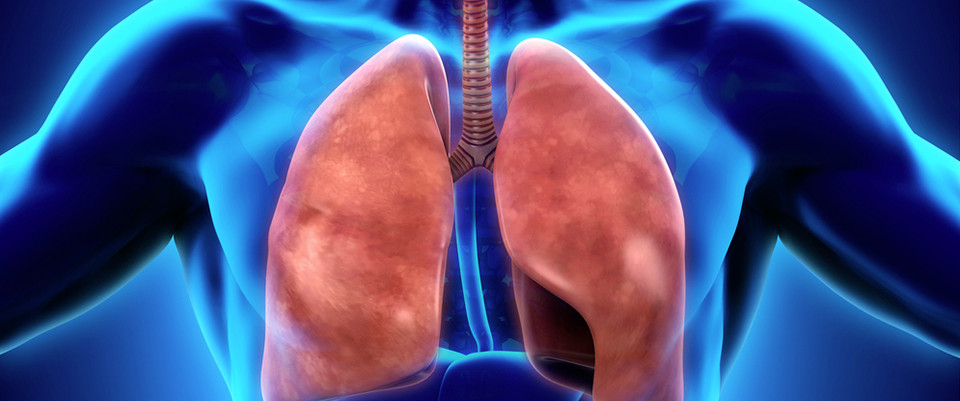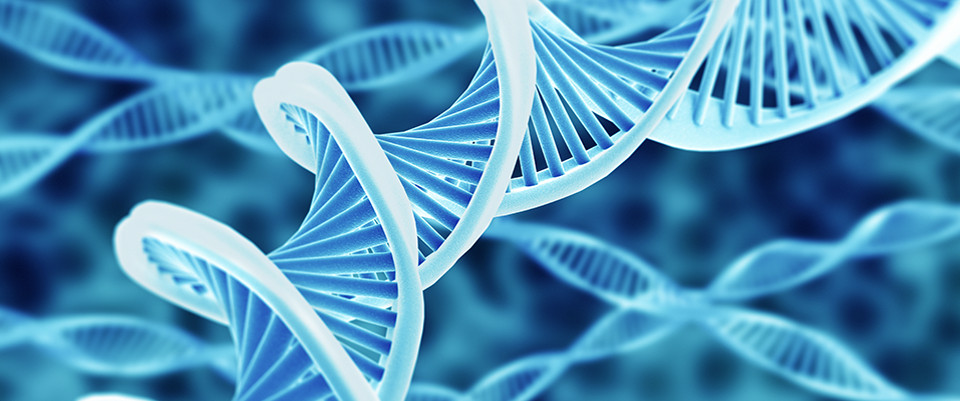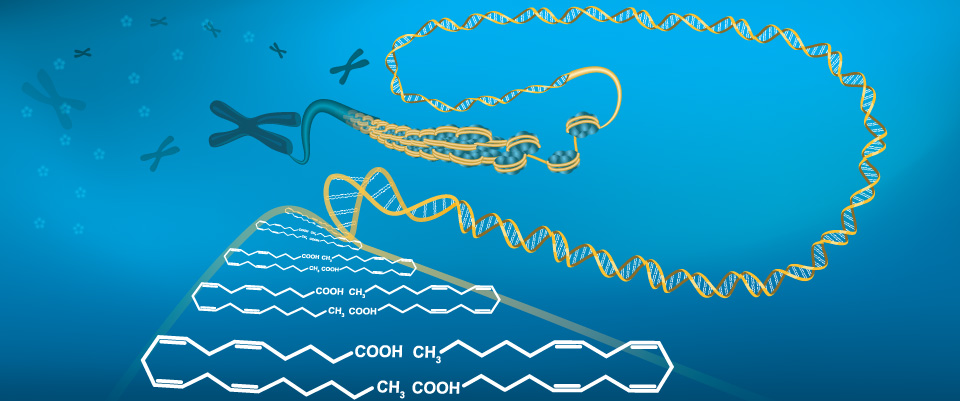PubMed
Comparison of phenolic compounds profile and antioxidant properties of different sweet cherry (Prunus avium L.) varieties.
Comparison of phenolic compounds profile and antioxidant properties of different sweet cherry (Prunus avium L.) varieties.
Food Chem. 2019 May 01;279:260-271
Authors: Acero N, Gradillas A, Beltran M, García A, Muñoz Mingarro D
Abstract
In the present work, three Spanish local varieties of Prunus avium (L.), as well as two foreign varieties were studied. The content of total phenols, flavonoids, anthocyanins, glucose and fructose of methanolic extracts from ripe fruits of each variety were analysed. A phytochemical profile of these cultivars was performed by UHPLC-qTOF-MS. The employed chromatographic method allowed a clear and rapid separation of the three main phenolic compound groups present in the extracts: hydroxycinnamic acids, anthocyanins and flavonoids. In addition, the extracts DPPH radical scavenging ability, as well as their capacity to affect xanthine/xanthine oxidase system, were determined. Finally, variations in ROS intracellular concentrations in HepG2 cell line cultures treated with cherry extracts were measured through DCFH-DA assay. All extracts showed a significant inhibitory effect on the xanthine/xanthine oxidase system. Differences between in vitro and in cell culture results evidence the interaction among the phenolic compounds of the extract.
PMID: 30611489 [PubMed - in process]
Untargeted Metabolomics Reveal Defensome-Related Metabolic Reprogramming in Sorghum bicolor against Infection by Burkholderia andropogonis.
Related Articles
Untargeted Metabolomics Reveal Defensome-Related Metabolic Reprogramming in Sorghum bicolor against Infection by Burkholderia andropogonis.
Metabolites. 2019 Jan 02;9(1):
Authors: Mareya CR, Tugizimana F, Piater LA, Madala NE, Steenkamp PA, Dubery IA
Abstract
Burkholderia andropogonis is the causal agent of bacterial leaf stripe, one of the three major bacterial diseases affecting Sorghum bicolor. However, the biochemical aspects of the pathophysiological host responses are not well understood. An untargeted metabolomics approach was designed to understand molecular mechanisms underlying S. bicolor⁻B. andropogonis interactions. At the 4-leaf stage, two sorghum cultivars (NS 5511 and NS 5655) differing in disease tolerance, were infected with B. andropogonis and the metabolic changes monitored over time. The NS 5511 cultivar displayed delayed signs of wilting and lesion progression compared to the NS 5655 cultivar, indicative of enhanced resistance. The metabolomics results identified statistically significant metabolites as biomarkers associated with the sorghum defence. These include the phytohormones salicylic acid, jasmonic acid, and zeatin. Moreover, metabolic reprogramming in an array of chemically diverse metabolites that span a wide range of metabolic pathways was associated with the defence response. Signatory biomarkers included aromatic amino acids, shikimic acid, metabolites from the phenylpropanoid and flavonoid pathways, as well as fatty acids. Enhanced synthesis and accumulation of apigenin and derivatives thereof was a prominent feature of the altered metabolomes. The analyses revealed an intricate and dynamic network of the sorghum defence arsenal towards B. andropogonis in establishing an enhanced defensive capacity in support of resistance and disease suppression. The results pave the way for future analysis of the biosynthesis of signatory biomarkers and regulation of relevant metabolic pathways in sorghum.
PMID: 30609758 [PubMed]
Rac-Mediated Macropinocytosis of Extracellular Protein Promotes Glucose Independence in Non-Small Cell Lung Cancer.
Related Articles
Rac-Mediated Macropinocytosis of Extracellular Protein Promotes Glucose Independence in Non-Small Cell Lung Cancer.
Cancers (Basel). 2019 Jan 02;11(1):
Authors: Hodakoski C, Hopkins BD, Zhang G, Su T, Cheng Z, Morris R, Rhee KY, Goncalves MD, Cantley LC
Abstract
Cancer cells can adapt to nutrient poor conditions by rewiring their metabolism and using alternate fuel sources. Identifying these adaptive metabolic pathways may provide novel targets for cancer therapy. Here, we identify a subset of non-small cell lung cancer (NSCLC) cell lines that survive in the absence of glucose by internalizing and metabolizing extracellular protein via macropinocytosis. Macropinocytosis is increased in these glucose independent cells, and is regulated by phosphoinositide 3-kinase (PI3K) activation of Rac-Pak signaling. Furthermore, inhibition of Rac-dependent macropinocytosis blocks glucose-independent proliferation. We find that degradation of internalized protein produces amino acids, including alanine, which generates TCA cycle and glycolytic intermediates in the absence of glucose. In this process, the conversion of alanine to pyruvate by alanine transaminase 2 (ALT2) is critical for survival during glucose starvation. Collectively, Rac driven macropinocytosis of extracellular protein is an adaptive metabolic pathway used by a subset of lung cancers to survive states of glucose deprivation, and may serve as a potential drug target for cancer therapy.
PMID: 30609754 [PubMed]
Palbociclib and Fulvestrant Act in Synergy to Modulate Central Carbon Metabolism in Breast Cancer Cells.
Related Articles
Palbociclib and Fulvestrant Act in Synergy to Modulate Central Carbon Metabolism in Breast Cancer Cells.
Metabolites. 2019 Jan 02;9(1):
Authors: Warth B, Palermo A, Rattray NJW, Lee NV, Zhu Z, Hoang LT, Cai Y, Mazurek A, Dann S, VanArsdale T, Fantin VR, Shields D, Siuzdak G, Johnson CH
Abstract
The aims of this study were to determine whether combination chemotherapeutics exhibit a synergistic effect on breast cancer cell metabolism. Palbociclib, is a selective inhibitor of cyclin-dependent kinases 4 and 6, and when patients are treated in combination with fulvestrant, an estrogen receptor antagonist, they have improved progression-free survival. The mechanisms for this survival advantage are not known. Therefore, we analyzed metabolic and transcriptomic changes in MCF-7 cells following single and combination chemotherapy to determine whether selective metabolic pathways are targeted during these different modes of treatment. Individually, the drugs caused metabolic disruption to the same metabolic pathways, however fulvestrant additionally attenuated the pentose phosphate pathway and the production of important coenzymes. A comprehensive effect was observed when the drugs were applied together, confirming the combinatory therapy's synergism in the cell model. This study also highlights the power of merging high-dimensional datasets to unravel mechanisms involved in cancer metabolism and therapy.
PMID: 30609717 [PubMed]
Elemental Metabolomics and Pregnancy Outcomes.
Related Articles
Elemental Metabolomics and Pregnancy Outcomes.
Nutrients. 2019 Jan 02;11(1):
Authors: McKeating DR, Fisher JJ, Perkins AV
Abstract
Trace elements are important for human health and development. The body requires specific micronutrients to function, with aberrant changes associated with a variety of negative health outcomes. Despite this evidence, the status and function of micronutrients during pregnancy are relatively unknown and more information is required to ensure that women receive optimal intakes for foetal development. Changes in trace element status have been associated with pregnancy complications such as gestational diabetes mellitus (GDM), pre-eclampsia (PE), intrauterine growth restriction (IUGR), and preterm birth. Measuring micronutrients with methodologies such as elemental metabolomics, which involves the simultaneous quantification and characterisation of multiple elements, could provide insight into gestational disorders. Identifying unique and subtle micronutrient changes may highlight associated proteins that are affected underpinning the pathophysiology of these complications, leading to new means of disease diagnosis. This review will provide a comprehensive summary of micronutrient status during pregnancy, and their associations with gestational disorders. Furthermore, it will also comment on the potential use of elemental metabolomics as a technique for disease characterisation and prediction.
PMID: 30609706 [PubMed - in process]
Brain Metabolomics Reveal the Antipyretic Effects of Jinxin Oral Liquid in Young Rats by Using Gas Chromatography⁻Mass Spectrometry.
Related Articles
Brain Metabolomics Reveal the Antipyretic Effects of Jinxin Oral Liquid in Young Rats by Using Gas Chromatography⁻Mass Spectrometry.
Metabolites. 2019 Jan 01;9(1):
Authors: Qian W, Shan J, Shen C, Yang R, Xie T, Di L
Abstract
Pyrexia is considered as a part of host's defense response to the invasion of microorganisms or inanimate matter recognized as pathogenic or alien, which frequently occurs in children. Jinxin oral liquid (JXOL) is a traditional Chinese medicine formula that has been widely used to treat febrile children in China. Experimental fever was induced by injecting yeast into young male Sprague-Dawley rats (80 ± 20 g) and the rectal temperature subsequently changed. Four hours later, the excessive production of interleukin (IL)-1β and prostaglandin (PG) E2 induced by yeast was regulated to normal by JXOL administration. A rat brain metabolomics investigation of pyrexia of yeast and antipyretic effect of JXOL was performed using gas chromatography-mass spectrometry (GC-MS). Clear separation was achieved between the model and normal group. Twenty-two significantly altered metabolites were found in pyretic rats as potential biomarkers of fever. Twelve metabolites, significantly adjusted by JXOL to help relieve pyrexia, were selected out as biomarkers of antipyretic mechanism of JXOL, which were involved in glycolysis, purine metabolism, tryptophan mechanism, etc. In conclusion, the brain metabolomics revealed potential biomarkers in the JXOL antipyretic process and the associated pathways, which may aid in advanced understanding of fever and therapeutic mechanism of JXOL.
PMID: 30609645 [PubMed]
A comprehensive strategy for studying protein-metabolite interactions by metabolomics and native mass spectrometry.
Related Articles
A comprehensive strategy for studying protein-metabolite interactions by metabolomics and native mass spectrometry.
Talanta. 2019 Mar 01;194:63-72
Authors: Qin Q, Wang B, Wang J, Chang M, Xia T, Shi X, Xu G
Abstract
Protein-metabolite interactions play important roles in many cellular and physiological processes in biological systems. However, the lack of effective research approaches impedes the understanding of the protein-metabolite interactions. In this study, a novel comprehensive strategy by combining metabolomics platform with native mass spectrometry was developed for investigating the protein-metabolite interactions. Peroxisome proliferator-activated receptors gamma (PPARγ) is a lipid-binding nuclear receptors that plays a key role in regulating fatty-acid oxidation and lipid metabolism, which was selected as the model protein. Seven metabolites including lyso-phosphatidylcholine (LPC) 16:0, LPC18:0, LPC18:1, arachidonic acid, oleic acid, linoleic acid and palmitoleic acid (p < 0.05) were found to have the possible interactions with the PPARγ, these LPCs were discovered as candidate ligands for the first time by using untargeted metabolomics method. Native mass spectrometry based on 15 T Fourier transform ion cyclotron resonance mass spectrometer was employed to directly detect the PPARγ-LPCs complexes to obtain their stoichiometry and kinetic constants. Isothermal titration calorimetry, circular dichroism spectrum and molecular modeling were further utilized to investigate the thermodynamics, conformation and binding mechanism of the interaction between PPARγ and LPCs. It was found that the PPARγ-LPC interaction was an endothermic process, and these LPCs have similar binding constants with stoichiometric number of 1:1. The novel strategy can provide a very useful approach for mapping and identifying unknown protein-metabolite interactions in biological systems.
PMID: 30609583 [PubMed - in process]
Metabolomic prostate cancer fields in HRMAS MRS-profiled histologically benign tissue vary with cancer status and distance from cancer.
Related Articles
Metabolomic prostate cancer fields in HRMAS MRS-profiled histologically benign tissue vary with cancer status and distance from cancer.
NMR Biomed. 2019 Jan 04;:e4038
Authors: Dinges SS, Vandergrift LA, Wu S, Berker Y, Habbel P, Taupitz M, Wu CL, Cheng LL
Abstract
In this article, we review the state of the field of high resolution magic angle spinning MRS (HRMAS MRS)-based cancer metabolomics since its beginning in 2004; discuss the concept of cancer metabolomic fields, where metabolomic profiles measured from histologically benign tissues reflect patient cancer status; and report our HRMAS MRS metabolomic results, which characterize metabolomic fields in prostatectomy-removed cancerous prostates. Three-dimensional mapping of cancer lesions throughout each prostate enabled multiple benign tissue samples per organ to be classified based on distance from and extent of the closest cancer lesion as well as the Gleason score (GS) of the entire prostate. Cross-validated partial least squares-discriminant analysis separations were achieved between cancer and benign tissue, and between cancer tissue from prostates with high (≥4 + 3) and low (≤3 + 4) GS. Metabolomic field effects enabled histologically benign tissue adjacent to cancer to distinguish the GS and extent of the cancer lesion itself. Benign samples close to either low GS cancer or extensive cancer lesions could be distinguished from those far from cancer. Furthermore, a successfully cross-validated multivariate model for three benign tissue groups with varying distances from cancer lesions within one prostate indicates the scale of prostate cancer metabolomic fields. While these findings could, at present, be potentially useful in the prostate cancer clinic for analysis of biopsy or surgical specimens to complement current diagnostics, the confirmation of metabolomic fields should encourage further examination of cancer fields and can also enhance understanding of the metabolomic characteristics of cancer in myriad organ systems. Our results together with the success of HRMAS MRS-based cancer metabolomics presented in our literature review demonstrate the potential of cancer metabolomics to provide supplementary information for cancer diagnosis, staging, and patient prognostication.
PMID: 30609175 [PubMed - as supplied by publisher]
TLC-bioautography identification and GC-MS analysis of antimicrobial and antioxidant active compounds in Musa × paradisiaca L. fruit pulp essential oil.
Related Articles
TLC-bioautography identification and GC-MS analysis of antimicrobial and antioxidant active compounds in Musa × paradisiaca L. fruit pulp essential oil.
Phytochem Anal. 2019 Jan 04;:
Authors: Fahim M, Ibrahim M, Zahiruddin S, Parveen R, Khan W, Ahmad S, Shrivastava B, Shrivastava AK
Abstract
INTRODUCTION: The absence of microbial growth and resistance to oxidative deterioration in fruits of Musa × paradisiaca L. (bananas) is an indication of the presence of antimicrobial and antioxidant metabolites.
OBJECTIVE: In order to investigate the secondary metabolomic spectrum as well as the active antimicrobial and antioxidants present in essential oils (EOs) from fruits of different geographical areas of M. × paradisiaca, gas chromatography-mass spectroscopy (GC-MS) principal component data correlation analysis is complemented with antimicrobial assays and phytochemical and bioautographic antioxidant fingerprints with thin layer chromatography (TLC).
METHODOLOGY: An EO was obtained by steam distillation and subjected to GC-MS and TLC for metabolomic profiling from fruit pulp. The antimicrobial potential was tested in both Escherichia coli as a gram negative and Bacillus subtilis as a gram positive microbe. Potential antioxidant metabolites were identified through TLC-bioautography and GC-MS analysis of active zones.
RESULTS: A maximum of 0.56% v/w EO was isolated from fruit pulps of M. × paradisiaca. Minimum inhibitory concentrations (MICs) against B. subtillis and E. coli were 0.25 and 0.35 μg/mL, respectively. Thus, 56 metabolites were identified through GC-MS. The major abundant antimicrobial metabolites found in EOs are α-thujene, γ-terpinene, α- and β-pinene, sabinene, β-myrcene, limonene, α-capaene, caryophyllene and (Z,E)-α farnesene. Aceteugenol, palmitic acid, stearic acid, palmitin, and stearin were identified as antioxidant metabolites. Principal component analysis of metabolite data reveals correlations and a clear separation based on metabolites obtained from various areas.
CONCLUSION: The data generated using metabolic profiling and cluster analysis helped to identify antimicrobial and antioxidant compounds in M. × paradisiaca.
PMID: 30609101 [PubMed - as supplied by publisher]
Real-Time Pure Shift HSQC NMR for Untargeted Metabolomics.
Related Articles
Real-Time Pure Shift HSQC NMR for Untargeted Metabolomics.
Anal Chem. 2019 Jan 04;:
Authors: Timari I, Wang C, Hansen AL, Costa Dos Santos G, Yoon SO, Bruschweiler-Li L, Bruschweiler R
Abstract
Sensitivity and resolution are key considerations for NMR applications in general, and for metabolomics in particular, where complex mixtures containing hundreds of metabolites over a large range of concentrations are commonly encountered. There is a strong demand for advanced methods that can provide maximal information in the shortest possible time frame. Here we present the optimization and application of the recently introduced 2D real-time BIRD 1H-13C HSQC experiment for NMR-based metabolomics at 13C natural abundance of aqueous samples. For mouse urine samples, it is demonstrated how this real-time pure shift sensitivity improved Heteronuclear Single Quantum Correlation (HSQC-SI) method provides broadband homonuclear decoupling along the proton detection dimension and thereby significantly improves spectral resolution in regions that are affected by spectral overlap. Moreover, the collapse of the scalar multiplet structure of cross-peaks leads to a sensitivity gain of about 40% - 50% over a traditional 2D HSQC-SI experiment. The experiment works well over a range of magnetic field strengths and is particularly useful when resonance overlap in crowded regions of the HSQC spectra hampers accurate metabolite identification and quantitation.
PMID: 30608652 [PubMed - as supplied by publisher]
Extending the Scope of 1H NMR Spectroscopy for the Analysis of Cellular Coenzyme A and Acetyl Coenzyme A.
Related Articles
Extending the Scope of 1H NMR Spectroscopy for the Analysis of Cellular Coenzyme A and Acetyl Coenzyme A.
Anal Chem. 2019 Jan 04;:
Authors: Gowda GAN, Abell L, Tian R
Abstract
Coenzyme A (CoA) and acetyl-coenzyme A (acetyl-CoA) are ubiquitous cellular molecules, which mediate hundreds of anabolic and catabolic reactions including energy metabolism. Highly sensitive methods including absorption spectroscopy and mass spectrometry enable their analysis, albeit with many limitations. To date, however, NMR spectroscopy has not been used to analyze these important molecules. Building on our recent efforts, which enabled simultaneous analysis of a large number of metabolites in tissue and blood including many coenzymes and antioxidants [Anal Chem. 2016, 88:4817-24; ibid 2017, 89:4620-4627], we describe here a new method for identification and quantitation of CoA and acetyl-CoA ex vivo in tissue. Using mouse heart, kidney, liver, brain and skeletal tissue, we show that a simple 1H NMR experiment can simultaneously measure these molecules. Identification of the two species involved a comprehensive analysis of the different tissue types using 1D and 2D NMR, in combination with spectral databases for standards, as well as spiking with authentic compounds. Time dependent studies showed that while the acetyl-CoA levels remain unaltered, CoA levels diminish by more than 50% within 24 h, which indicates that CoA is labile in solution; however, degassing the sample with helium gas halted its oxidation. Further, interestingly, we also identified endogenous coenzyme A glutathione disulfide (CoA-S-S-G) in tissue for the first time by NMR and show that CoA, when oxidized in tissue extract also forms the same disulfide metabolite. The new ability to simultaneously visualize absolute concentrations of CoA, acetyl-CoA and endogenous CoA-S-S-G along with redox coenzymes (NAD+, NADH, NADP+, NADPH), energy coenzymes (ATP, ADP, AMP), antioxidants (GSH, GSSG) and a vast pool of other metabolites using a single 1D NMR spectrum offers a new avenue in the metabolomics field for investigation of cellular function in health and disease.
PMID: 30608643 [PubMed - as supplied by publisher]
Methionine Supply During Late-Gestation Triggers Offspring Sex-Specific Divergent Changes in Metabolic and Epigenetic Signatures in Bovine Placenta.
Related Articles
Methionine Supply During Late-Gestation Triggers Offspring Sex-Specific Divergent Changes in Metabolic and Epigenetic Signatures in Bovine Placenta.
J Nutr. 2019 Jan 04;:
Authors: Batistel F, Alharthi AS, Yambao RRC, Elolimy AA, Pan YX, Parys C, Loor JJ
Abstract
Background: Nonruminant male and female offspring respond differently to gestational nutrition, with placenta contributing to the underlying mechanisms. However, similar data are lacking in large ruminants.
Objectives: The aim of this study was to investigate the impact of methionine supply during late-gestation on metabolism and DNA methylation in placenta from cows carrying male or female calves.
Methods: During the last 28 d of pregnancy, cows were individually fed a control diet (CON) or the control diet plus rumen-protected d,l-methionine (MET; 0.9 g/kg dry matter intake). Placentomes collected at term were classified according to cow dietary treatment and offspring sex as follows: Male CON (n = 7), Male MET (n = 7), Female CON (n = 8), and Female MET (n = 8). Calf growth was measured until 9 wk of age. Targeted metabolomics, RT-PCR, global DNA methylation, and activity of selected enzymes in one-carbon metabolism and transsulfuration pathways were performed. Statistics were conducted via ANOVA using MIXED models.
Results: At birth, Male MET calves were heavier than Male CON calves (7.6%, P = 0.02), but body mass was similar at 9 wk of age. In contrast, compared with Female CON, Female MET calves had greater body mass at 9 wk of age (6.3%, P = 0.03). Compared with Male CON, placenta from Male MET calves had greater concentrations of tricarboxylic acid (TCA) cycle and transsulfuration intermediates (23-100%, P < 0.05), along with greater 5-methyltetrahydrofolatehomocysteine methyltransferase activity (67%, P = 0.03). Compared with Female CON, placenta from Female MET calves had greater concentrations of one-carbon metabolism intermediates (13-52%, P < 0.05). DNA methyltransferase 3A (DNMT3A) was upregulated (43%, P < 0.01) in placenta from Female MET compared with Female CON calves. Global DNA methylation was lower in placenta from Female MET compared with Female CON calves (45%, P = 0.06).
Conclusions: Methionine supply affects placental metabolism, DNA methylation, and body mass of the calf in a sex-specific manner, underscoring its importance as dietary methyl-donor for pregnant cows.
PMID: 30608595 [PubMed - as supplied by publisher]
Clinical and genetic analysis of 7 Chinese patients with β-ureidopropionase deficiency.
Related Articles
Clinical and genetic analysis of 7 Chinese patients with β-ureidopropionase deficiency.
Medicine (Baltimore). 2019 Jan;98(1):e14021
Authors: Fang Y, Cai C, Wang C, Sun B, Zhang X, Fan W, Hu W, Meng Y, Lin S, Zhang C, Zhang Y, Shu J
Abstract
β-Ureidopropionase (βUP) deficiency is an autosomal recessive disease caused by abnormal changes in the pyrimidine-degradation pathway. This study aimed to investigate the mutation of β-ureidopropionase gene (UPB1) gene and clinical features of 7 Chinese patients with βUP deficiency.We reported 7 Chinese patients with βUP deficiency who were admitted at Tianjin Children's Hospital. Urine metabolomics was detected by gas chromatography-mass spectrometry (GC-MS). Then genetic testing of UPB1 was conducted by polymerase chain reaction (PCR) method.The patients presented with developmental delay, seizures, autism, abnormal magnetic resonance imaging, and significantly elevated levels of N-carbamyl-β-alanine and N-carbamyl-β-aminoisobutyric acid in urine. Subsequent analysis of UPB1 mutation revealed 2 novel missense mutations (c.851G>T and c.853G>A), 3 previously reported mutations including 2 missense mutations (c.977G>A and c.91G>A) and 1 splice site mutation (c.917-1 G>A).The results suggested that the UPB1 mutation may contribute to βUP deficiency. The c.977G>A is the most common mutation in Chinese population.
PMID: 30608453 [PubMed - in process]
Structure annotation of all mass spectra in untargeted metabolomics.
Related Articles
Structure annotation of all mass spectra in untargeted metabolomics.
Anal Chem. 2019 Jan 04;:
Authors: Blaženović I, Kind T, Sa MR, Ji J, Vaniya A, Wancewicz B, Roberts BS, Torbasinovic H, Lee T, Mehta SS, Showalter MR, Song H, Kwok JF, Jahn D, Kim J, Fiehn O
Abstract
Urine metabolites are used in many clinical and biomedical studies, but usually only for a few classic compounds. Metabolomics detects vastly more metabolic signals that may be used to precisely define the health status of individuals. However, many compounds remain unidentified, hampering biochemical conclusions. Here, we annotate all metabolites detected by two untargeted metabolomic assays, hydrophilic interaction chromatography (HILIC) -Q Exactive HF mass spectrometry and charged surface hybrid (CSH)- Q Exactive HF mass spectrometry. Over 9,000 unique metabolite signals were detected, of which 42% triggered MS/MS fragmentations in data-dependent mode. On the highest Metabolomics Standards Initiative (MSI) confidence level 1, we identified 175 compounds using authentic standards with precursor mass, retention time, and MS/MS matching. Additional 578 compounds were annotated by precursor accurate mass and MS/MS matching alone, MSI level 2, including a novel library specifically geared at acylcarnitines (CarniBlast). The rest of the metabolome is usually left unannotated. To fill this gap, we used the in silico fragmentation tool CSI:FingerID and the new NIST hybrid search to annotate all further compounds (MSI level 3). Testing the top-ranked metabolites in CSI:Finger ID annotations yielded 40% accuracy when applied to the MSI level 1 identified compounds. We classified all MSI level 3 annotations by the NIST hybrid search using the ClassyFire ontology into 21 superclasses that were further distinguished into 184 chemical classes. ClassyFire annotations showed that the previously unannotated urine metabolome consists of 28% derivatives of organic acids, 16% heterocyclics and 16% lipids as major classes.
PMID: 30608141 [PubMed - as supplied by publisher]
Metabolomic Biomarkers in Gynecology: a Treasure Path or a False Path?
Related Articles
Metabolomic Biomarkers in Gynecology: a Treasure Path or a False Path?
Curr Med Chem. 2019 Jan 04;:
Authors: Igor G, Stanislav S, Tatyana P, Alexey M, Denis B, Eduard K
Abstract
Omic-technologies (genomics, transcriptomics, proteomics and metabolomics) have become more important in current medical science. Among them, it is metabolomics that most accurately reflects the minor changes in body functioning, as it focuses on metabolome - the group of the metabolism products, both intermediate and end. Therefore, metabolomics is actively engaged in fundamental and clinical studies and search for potential biomarkers. The biomarker could be used in diagnostics, management and stratification of the patients, as well as in prognosing the outcomes. The good example is gynecology, since many gynecological diseases lack effective biomarkers. In the current review, we aimed to summarize the results of the studies, devoted to the search of potential metabolomic biomarkers for the most common gynecological diseases.
PMID: 30608036 [PubMed - as supplied by publisher]
Biomarkers of food intake for Allium vegetables.
Related Articles
Biomarkers of food intake for Allium vegetables.
Genes Nutr. 2018;13:34
Authors: Praticò G, Gao Q, Manach C, Dragsted LO
Abstract
Allium vegetables are widely consumed around the world and are known for their potential bioactive components improving human health. These effects have been extensively investigated; however, the results were inconsistent in human studies. Biomarkers of food intake (BFIs) could provide objective measurements of food intake in observational studies and assess compliance in intervention studies. Therefore, the discovery and application of BFIs for Allium vegetables would facilitate the exploring and understanding of the health benefit of Allium vegetables. In this manuscript, we reviewed the currently used and potential candidate BFIs for Allium vegetables and evaluated their levels of validation. S-Allylmercapturic acid (ALMA), allyl methyl sulfide (AMS), allyl methyl sulfoxide (AMSO), allyl methyl sulfone (AMSO2), and S-allylcysteine (SAC), which are derived from organosulfur compounds, were shown to be promising candidate BFIs for garlic consumption. Further validation is needed to assess their robustness and concordance with other measures. Their applicability for the whole food group should be evaluated as well. N-Acetyl-S-(2-carboxypropyl)cysteine (CPMA) was detected in high levels in urine after both garlic and onion intake, suggesting that it may be used for the assessment of intake of Allium food group. The available information regarding its kinetics, robustness, and analytical performance is limited and needs to be assessed in further studies. No candidate BFIs specific to intake of onion, leek, chives, shallots, or ramsons were found. Untargeted metabolomics studies and further validation studies should be performed to discover more reliable BFIs for individual Allium vegetables and the whole food group. This paper serves as an example of Biomarker of Food Intake Reviews (BFIRev) and biomarker of food intake validation procedures.
PMID: 30607216 [PubMed]
Continuum of Host-Gut Microbial Co-metabolism: Host CYP3A4/3A7 Are Responsible for Tertiary Oxidations of Deoxycholate Species.
Related Articles
Continuum of Host-Gut Microbial Co-metabolism: Host CYP3A4/3A7 Are Responsible for Tertiary Oxidations of Deoxycholate Species.
Drug Metab Dispos. 2019 Jan 03;:
Authors: Zhang J, Gao LZ, Chen YJ, Zhu PP, Yin SS, Su MM, Ni Y, Miao J, Wu WL, Chen H, Brouwer KLR, Liu CX, Xu L, Jia W, Lan K
Abstract
The gut microbiota modifies endogenous primary bile acids (BAs) to produce exogenous secondary BAs, which may be further metabolized by cytochrome P450 enzymes (CYPs). Our primary aim was to examine how the host adapts to the stress of microbe-derived secondary BAs by CYPs-mediated oxidative modifications on the steroid nucleus. Five unconjugated tri-hydroxyl BAs that were structurally and/or biologically associated with deoxycholate (DCA) were determined in human biological samples by LC-MS/MS in combination with enzyme-digestion techniques. They were identified as DCA-19-ol, DCA-6β-ol, DCA-5β-ol, DCA-6α-ol, DCA-1β-ol and DCA-4β-ol based on matching with in-lab synthesized standards. Metabolic inhibition assays in human liver microsomes and recombinant CYP assays revealed that CYP3A4 and CYP3A7 were responsible for the regioselective oxidations of both DCA and its conjugated forms, glycodeoxycholate (GDCA) and taurodeoxycholate (TDCA). The modification of secondary BAs to tertiary BAs defines a host liver (primary BAs) - gut microbiota (secondary BAs) - host liver (tertiary BAs) axis. The regioselective oxidations of DCA, GDCA and TDCA by CYP3A4 and CYP3A7 may help eliminate host-toxic DCA species. The 19- and 4β-hydroxylation of DCA species demonstrated outstanding CYP3A7 selectivity and may be useful indicators of CYP3A7 activity.
PMID: 30606729 [PubMed - as supplied by publisher]
Urinary Levels of Trimethylamine-N-Oxide and Incident Coronary Heart Disease: A Prospective Investigation Among Urban Chinese Adults.
Related Articles
Urinary Levels of Trimethylamine-N-Oxide and Incident Coronary Heart Disease: A Prospective Investigation Among Urban Chinese Adults.
J Am Heart Assoc. 2019 Jan 08;8(1):e010606
Authors: Yu D, Shu XO, Rivera ES, Zhang X, Cai Q, Calcutt MW, Xiang YB, Li H, Gao YT, Wang TJ, Zheng W
Abstract
Background Trimethylamine-N-oxide ( TMAO ), a diet-derived, gut microbial-host cometabolite, has been associated with adverse cardiovascular outcomes in patient populations; however, evidence is lacking from prospective studies conducted in general populations and non-Western populations. Methods and Results We evaluated urinary levels of TMAO and its precursor metabolites (ie, choline, betaine, and carnitine) in relation to risk of coronary heart disease ( CHD ) among Chinese adults in a nested case-control study, including 275 participants with incident CHD and 275 individually matched controls. We found that urinary TMAO , but not its precursors, was associated with risk of CHD . The odds ratio for the highest versus lowest quartiles of TMAO was 1.91 (95% CI, 1.08-3.35; Ptrend=0.008) after adjusting for CHD risk factors including obesity, diet, lifestyle, and metabolic diseases and 1.75 (95% CI, 0.96-3.18; Ptrend=0.03) after further adjusting for potential confounders or mediators including central obesity, dyslipidemia, inflammation, and intake of seafood and deep-fried meat or fish, which were associated with TMAO level in this study. The odds ratio per standard deviation increase in log- TMAO was 1.30 (95% CI, 1.03-1.63) in the fully adjusted model. A history of diabetes mellitus modified the TMAO - CHD association. A high TMAO level (greater than or equal to versus lower than the median) was associated with odds ratios of 6.21 (95% CI, 1.64-23.6) and 1.56 (95% CI, 1.00-2.43), respectively, among diabetic and nondiabetic participants ( Pinteraction=0.02). Diabetes mellitus status also modified the associations of choline, betaine, and carnitine with risk of CHD ; significant positive associations were found among diabetic participants, but null associations were noted among total and nondiabetic participants. Conclusions Our study suggests that TMAO may accelerate the development of CHD , highlighting the importance of diet-gut microbiota-host interplay in cardiometabolic health.
PMID: 30606084 [PubMed - in process]
Diagnostic fragmentation filtering for the discovery of new chaetoglobosins and cytochalasins.
Related Articles
Diagnostic fragmentation filtering for the discovery of new chaetoglobosins and cytochalasins.
Rapid Commun Mass Spectrom. 2019 Jan 15;33(1):133-139
Authors: Walsh JP, Renaud JB, Hoogstra S, McMullin DR, Ibrahim A, Visagie CM, Tanney JB, Yeung KK, Sumarah MW
Abstract
RATIONALE: Microbial natural products are often biosynthesized as classes of structurally related compounds that have similar tandem mass spectrometry (MS/MS) fragmentation patterns. Mining MS/MS datasets for precursor ions that share diagnostic or common features enables entire chemical classes to be identified, including novel derivatives that have previously been unreported. Analytical data analysis tools that can facilitate a class-targeted approach to rapidly dereplicate known compounds and identify structural variants within complex matrices would be useful for the discovery of new natural products.
METHODS: A diagnostic fragmentation filtering (DFF) module was developed for MZmine to enable the efficient screening of MS/MS datasets for class-specific product ions(s) and/or neutral loss(es). This approach was applied to series of the structurally related chaetoglobosin and cytochalasin classes of compounds. These were identified from the culture filtrates of three fungal genera: Chaetomium globosum, a putative new species of Penicillium (called here P. cf. discolor: closely related to P. discolor), and Xylaria sp. Extracts were subjected to LC/MS/MS analysis under positive electrospray ionization and operating in a data-dependent acquisition mode, performed using a Thermo Q-Exactive mass spectrometer. All MS/MS datasets were processed using the DFF module and screened for diagnostic product ions at m/z 130.0648 and 185.0704 for chaetoglobosins, and m/z 120.0808 and 146.0598 for cytochalasins.
RESULTS: Extracts of C. globosum and P. cf. discolor strains revealed different mixtures of chaetoglobosins, whereas the Xylaria sp. produced only cytochalasins; none of the strains studied produced both classes of compounds. The dominant chaetoglobosins produced by both C. globosum and P. cf. discolor were chaetoglobosins A, C, and F. Tetrahydrochaetoglobosin A was identified from P. cf. discolor extracts and is reported here for the first time as a natural product. The major cytochalasins produced by the Xylaria sp. were cytochalasin D and epoxy cytochalasin D. A larger unknown "cytochalasin-like" molecule with the molecular formula C38 H47 NO10 was detected from Xylaria sp. culture filtrate extracts and is a current target for isolation and structural characterization.
CONCLUSIONS: DFF is an effective LC/MS data analysis approach for rapidly identifying entire classes of compounds from complex mixtures. DFF has proved useful in the identification of new natural products and allowing for their partial characterization without the need for isolation.
PMID: 30325552 [PubMed - indexed for MEDLINE]
Effects of triphenyl phosphate exposure during fetal development on obesity and metabolic dysfunctions in adult mice: Impaired lipid metabolism and intestinal dysbiosis.
Related Articles
Effects of triphenyl phosphate exposure during fetal development on obesity and metabolic dysfunctions in adult mice: Impaired lipid metabolism and intestinal dysbiosis.
Environ Pollut. 2018 Dec 24;246:630-638
Authors: Wang D, Yan S, Yan J, Teng M, Meng Z, Li R, Zhou Z, Zhu W
Abstract
Previous in vitro studies have implied that triphenyl phosphate (TPHP) may act as an obesogen. However, its specific contributions to the progression of obesity and related metabolic diseases are still unclear in vivo in mice. In this study, we evaluated the effects of in utero and lactational exposure to three doses of TPHP (10, 100, and 1000 μg/kg BW) on obesity and metabolic dysfunctions in adult male mice fed a low-fat diet (LFD) or high-fat diet (HFD), by examining body weight, liver weight, histopathology, blood biochemistry, gene expression, and gut microbiota compositions and metabolic functions. Results showed that TPHP exposure led to increased body weight, liver weight, fat mass, hepatic steatosis, impaired glucose homeostasis, and insulin resistance, and mRNA levels of genes involved in lipid metabolism, especially lipogenesis and lipid accumulation, were significantly altered by TPHP treatment. Gas chromatography-mass spectrometry (GC-MS) analysis further supported the changes in fatty acid composition. Intestinal flora measurements by 16S rRNA gene sequencing and 1H NMR based fecal metabolomics indicated that TPHP treatment modulated gut microbiome composition and influenced host-gut co-metabolism, especially for bile acids and short chain fatty acids (SCFAs). These results suggest that fetal exposure to TPHP can promote the development of obesity and metabolic dysfunctions in adult mice.
PMID: 30605818 [PubMed - as supplied by publisher]











